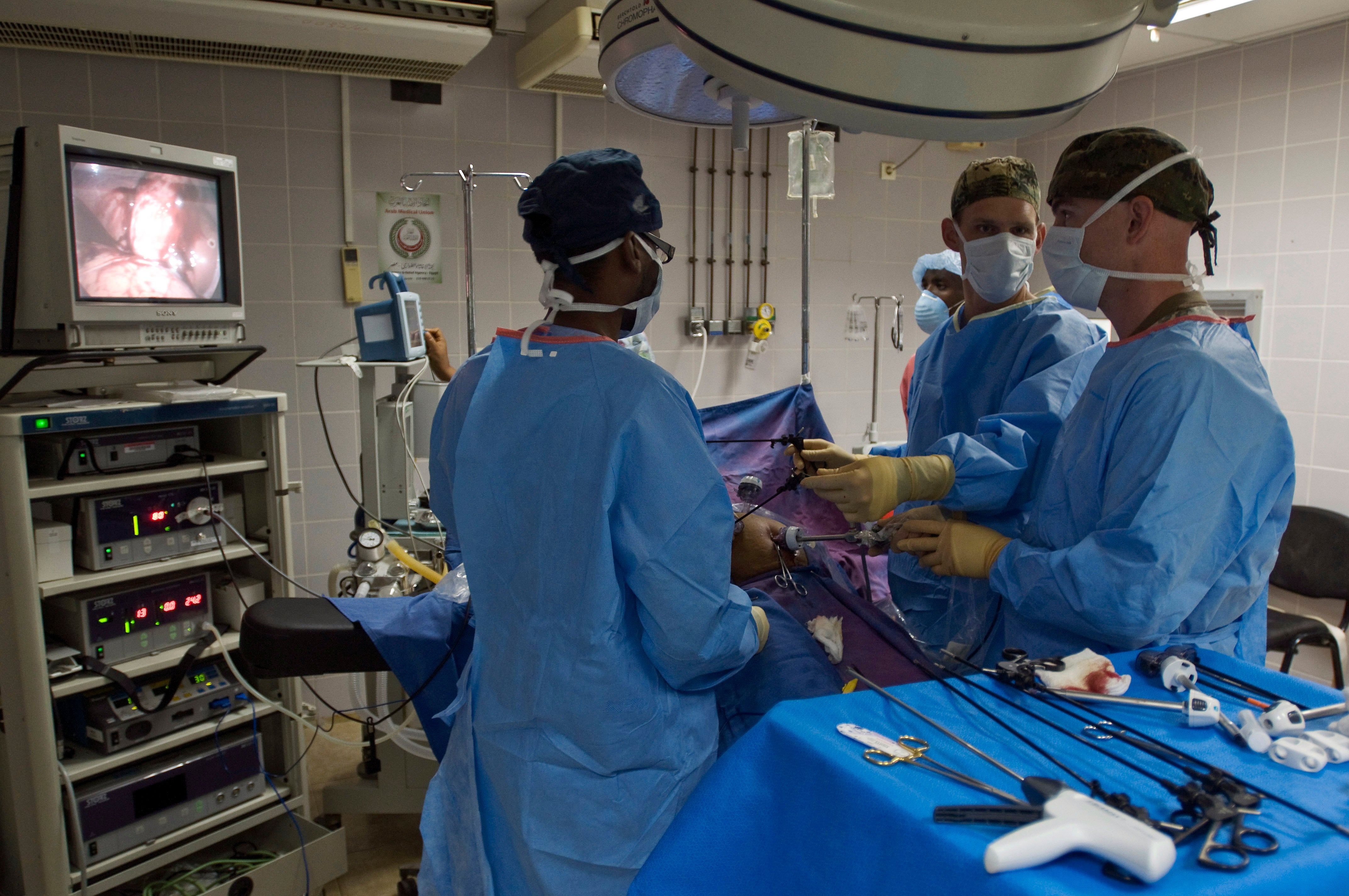By Nicole Strossman, Biochemistry and Molecular Biology, ’17
What do you picture when you think about surgery? Most likely, you imagine a person having their body cut open, and then a surgeon performing what is necessary to fix the problem, whether that be removing a damaged organ or tissue, repairing damages internally, or performing some other procedure. In all of these cases, it is expected that the doctor makes a cut large enough so that he or she can see what is inside of the body and operates. However, a new method of surgery takes a radically different approach. Laparoscopic surgery, also called minimally invasive surgery, Band-Aid surgery, or keyhole surgery, is a relatively new surgical technique that is revolutionizing the surgical field. Traditionally, surgery is performed by making a large incision in order to directly view and operate on the tissues, organs, and other structures of interest inside of the body. In contrast, with laparoscopic surgery, a series of small incisions, typically of .5 cm to 1.5 cm, are made along the abdomen. At each incision, commonly referred to as a port, a small tube called a trocar is inserted, and it essentially serves as an entrance for other materials that are necessary for the surgery. First, carbon dioxide gas must be inserted into the abdomen to inflate it, allowing space for the surgeon to view inside and perform the necessary work. Then, a camera attached to a laparoscope is inserted into the body and transmits images to a viewing screen in the room, which enables the surgeon to see what is necessary to perform the surgery. Other devices, such as surgical stapling devices and energy sources, are also passed through the trocars for other uses inside the body. While most incisions for laparoscopic surgery are fairly small, often, a larger incision, ranging from 2 to 4 inches, must be made to allow removal of tissue. Additionally, hand-assisted laparoscopic surgery is sometimes used. In this method, a larger incision is made, allowing for the surgeon to insert his or her hand into the abdomen and thus directly perform the surgery, while still using the same devices as laparoscopic surgery (Peters, 2012). After the surgery is complete, the carbon dioxide is removed from abdomen, the devices inside are removed, and stitches are used to close the incisions.
Although laparoscopic surgery is a relatively new technique and thus not entirely commonplace, there are many procedures that commonly use this method. Most of the procedures that utilize it are centered near the abdomen, as this is the area most easily accessible through the small incisions. The most common procedure using laparoscopic surgery is cholecystectomy, which is removal of the gallbladder. In fact, almost all gallbladder removals in the U.S. are now performed by laparoscopic surgery. Additionally, it is used for a variety of other procedures, examples being gastric bypass surgery, hernia repair, anti-reflux surgery, liver and biliary disease treatment, hiatal hernia treatment, splenectomy, colon and intestinal disorders, ulcer surgery, appendix removal, and adrenal gland removal (Saber, 2014). While traditional surgical procedures are still more common than the laparoscopic methods in some of these examples, there is a trend in increasing utilizing laparoscopic surgical techniques. Additionally, these are just the most common examples of laparoscopic procedures, and there are other procedures that utilize laparoscopic methods.
There are many measures taken to ensure the safety of this procedure. To start, before the surgery is considered, the patient must undergo an abdomen inspection to ensure that they are a candidate for laparoscopic surgery. Additionally, previous health conditions are considered, as some conditions may put a patient at risk during the procedure. This measure decreases the likelihood of the patient experiencing any problems during the procedure. However, if there are problems during the operation, there are ways to prevent further damage. For instance, if there is too much inflammation, a larger incision will be made to complete the surgery. Additionally, if anything else goes wrong the surgeon can always modify the procedure to make sure it remains safe (Peters, 2012).
There are a number of advantages to laparoscopic surgery as opposed to traditional surgery. To start, the small size of the incision provides a variety of benefits. First, it reduces the risk of blood loss and hemorrhaging, since the area being cut open is much smaller. This, in turn, reduces the need for blood transfusions, which minimizes the potential for infections. Additionally, internal organs are less externally exposed, also reducing the risk for infection. Beyond the advantages during the surgery, there are also advantages after the surgery is complete. To start, scarring is minimized, since the incisions are not as large. Additionally, the small incision size reduces the pain that the patient feels following the procedure, so he or she is able to return to their normal daily routine sooner. Lastly, the shorter recovery time allows for a shorter hospital stay, which both reduces hospital bills and decreases the amount of time that the patient is exposed to the possible infections associated with hospital stays (Mandal, 2010).
Overall, laparoscopic surgery is a new advancement in medicine that allows for new methods of surgery that require fewer incisions and less pain. The procedure is just as safe as traditional surgery, and also provides a number of advantages to the patient, both during and following the procedure. For these reasons, laparoscopic surgery is becoming more popular, and once technology advances even further, it may take the place of traditional surgery almost entirely.
Works Cited
Mandal, Ananya, MD. “Laparoscopic Surgery Advantages.” News-Medical.net. N.p., 19 May 2010. Web.
Peters, Walter R., MD. “Minimally Invasive Surgery Expanded Version.” Minimally Invasive Surgery Expanded Version. N.p., 2012. Web.
Saber, Alan, MD. “Laparoscopy: Procedure and Recovery Time.” EMedicineHealth. N.p., 19 Aug. 2014. Web.

